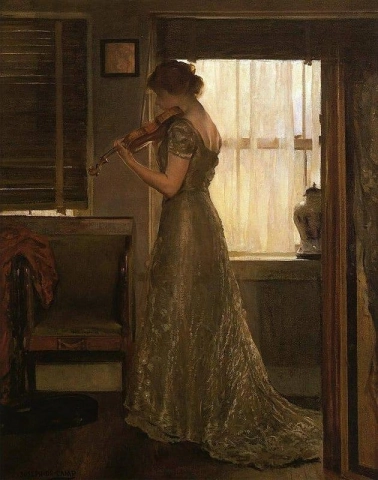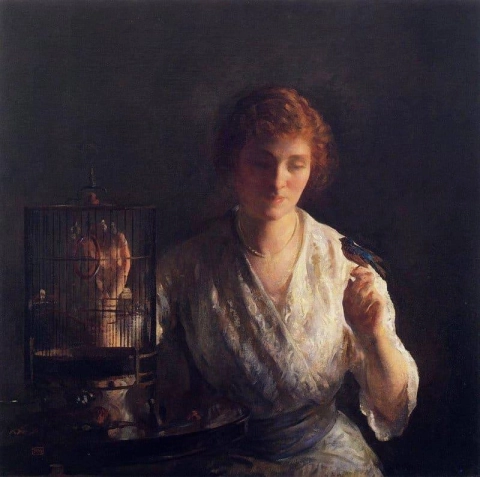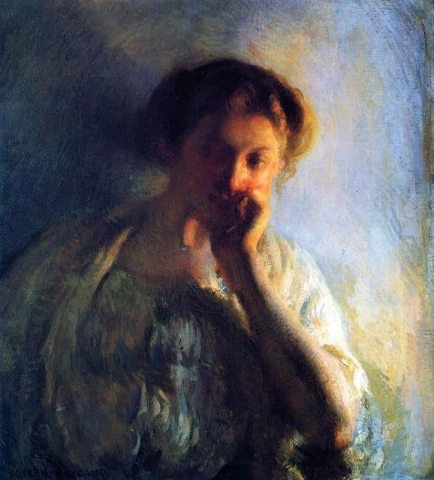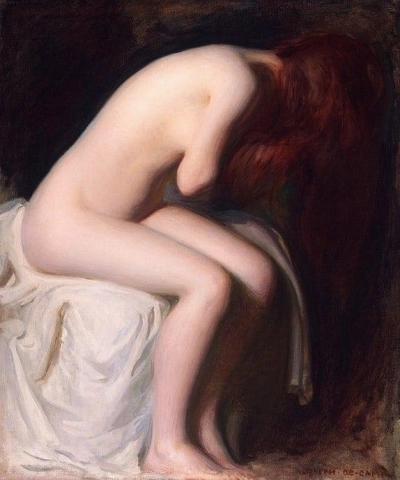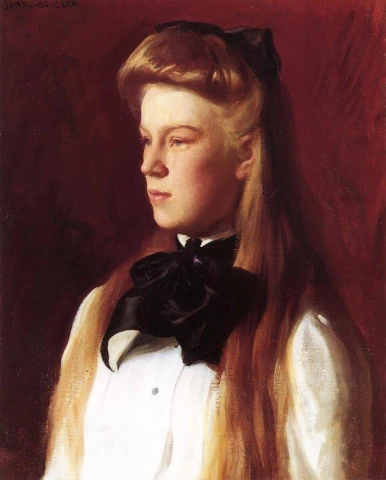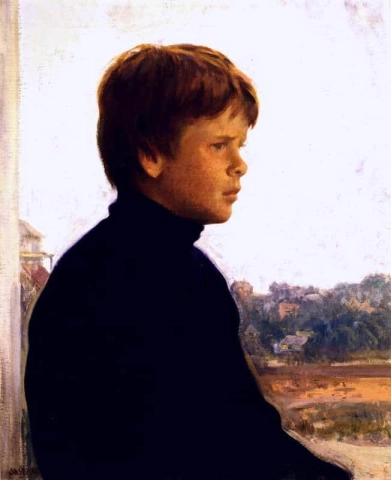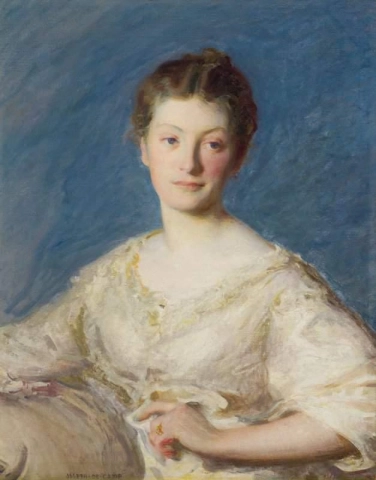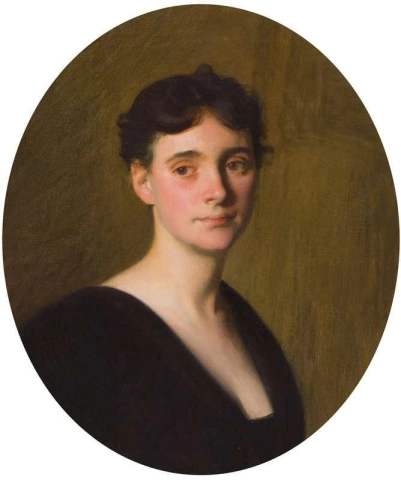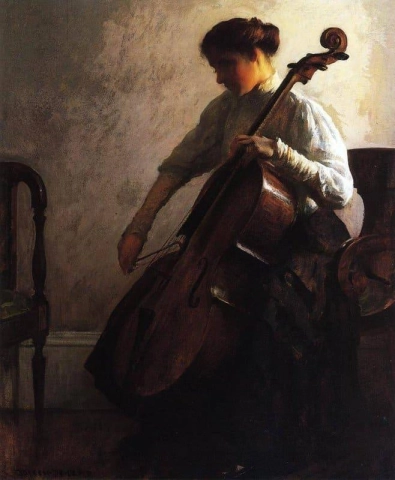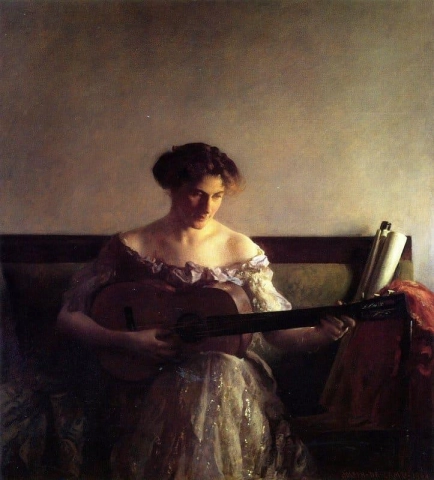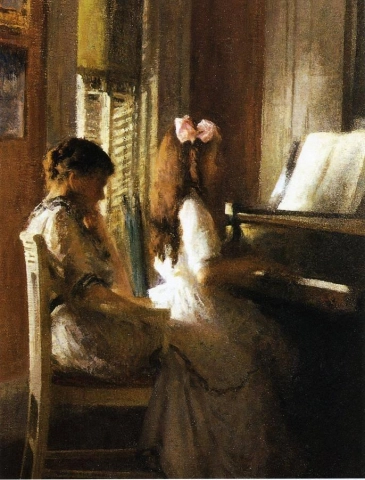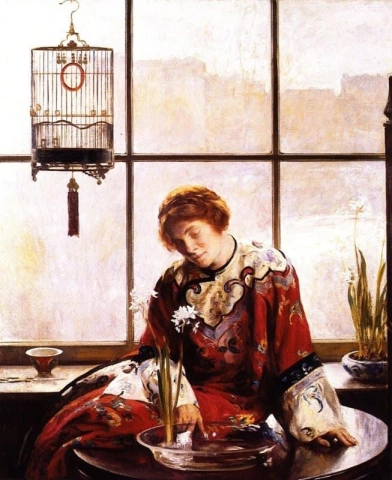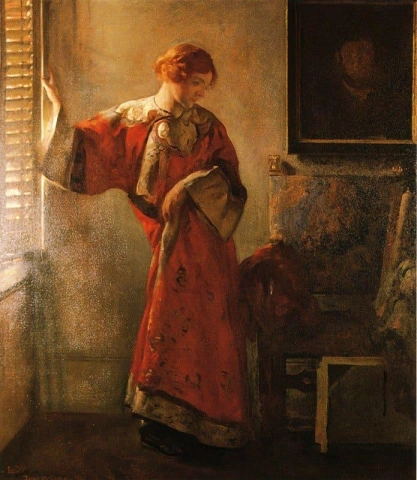
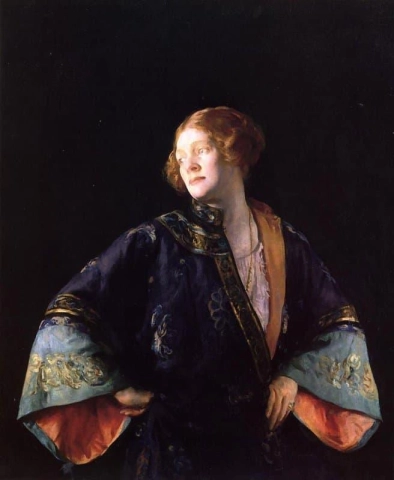
Hand painted reproductions of Decamp Joseph Rodefer
Joseph Rodefer DeCamp: American Impressionist and Figurative Painter
Joseph Rodefer DeCamp (1858–1923) was an American painter renowned for his contributions to the Impressionist movement in the United States. His ability to capture light, form, and the human figure with a refined and naturalistic approach set him apart from many of his contemporaries. DeCamp's work ranged from portraits to landscapes, but it is his paintings of figures, particularly his depictions of women in domestic and outdoor settings, that left the most enduring mark on American art. As a member of the prominent "Boston School" of Impressionists, DeCamp’s influence helped shape American painting in the late 19th and early 20th centuries.
Early Life and Education
Born on 5 February 1858 in Cincinnati, Ohio, Joseph Rodefer DeCamp showed an early talent for drawing. His family recognized his artistic abilities, and DeCamp was sent to the prestigious National Academy of Design in New York. He later studied at the Art Students League of New York, where he honed his craft and developed a passion for painting.
DeCamp’s education continued in Europe, where he spent several years studying and immersing himself in the art scene. He was particularly drawn to Paris, where he studied under notable French artists. In Paris, he was exposed to the works of the French Impressionists, including Claude Monet and Edgar Degas, whose techniques and emphasis on light and atmosphere would greatly influence his own work.
Artistic Development and Style
DeCamp's early works were influenced by traditional academic painting techniques, but as he became more exposed to the Impressionist movement, his style began to evolve. He adopted the Impressionist approach to color and light, focusing on the effects of natural light and creating scenes that emphasized the transitory nature of the moment.
One of DeCamp's signature techniques was his use of color, particularly his ability to capture the subtle gradations of light in both outdoor and indoor settings. His brushwork was loose and expressive, characteristic of the Impressionist style, but with a level of precision that allowed him to maintain a strong sense of form. This technique was particularly evident in his figure paintings, where the play of light on the human body became a central focus.
While DeCamp was known for his Impressionistic landscapes, it was his figural paintings, often featuring women in intimate, domestic settings, that brought him widespread recognition. His female subjects were often portrayed in outdoor environments, such as gardens or near water, and he had a particular talent for capturing the softness of light on skin and fabric. These works were imbued with a sense of tranquility, capturing moments of peaceful contemplation.
DeCamp’s work was often noted for its vivid, yet harmonious use of color, with a particular focus on the play of light on the figures and the environment. His paintings evoked a sense of calm and beauty, with an emphasis on the natural world as a source of emotional depth.
Themes and Significance
Joseph Rodefer DeCamp’s most significant contributions to art were his unique approaches to portraiture and figure painting, along with his interpretations of light and color. His work reflects a deep understanding of the human form and a desire to represent everyday life in a naturalistic, yet idealized way. Many of his paintings, especially his depictions of women, convey an aura of timeless elegance, subtly conveying the emotional states and inner worlds of his subjects.
In addition to his portraits, DeCamp created a series of landscapes, which were often infused with the same sensitivity to light and atmosphere. He was fascinated by the effects of changing light throughout the day, and this is clearly reflected in his work, where he captured fleeting moments of beauty in the natural world.
While DeCamp’s work was often grounded in realism, he was not opposed to the more lyrical, even romantic aspects of Impressionism. His use of vivid color and his attention to the atmospheric qualities of light created works that were both immediate and evocative. Through his figure paintings, DeCamp contributed to a broader cultural interest in representing the inner life and quiet dignity of women during his time.
Achievements and Recognition
Joseph Rodefer DeCamp achieved considerable success during his lifetime. He exhibited widely, both in the United States and abroad, and earned several prestigious awards, including recognition from the National Academy of Design and the Pennsylvania Academy of the Fine Arts. His work was also featured in important exhibitions such as the Paris Salon and the Boston Art Club.
DeCamp was a prominent member of the "Boston School" of painters, a group of artists who were instrumental in introducing the principles of Impressionism to American audiences. The Boston School artists focused on capturing everyday scenes with an emphasis on light, color, and the human figure, and their work contributed to the evolution of American art in the late 19th and early 20th centuries.
Although DeCamp’s work may not be as widely recognized today as some of his contemporaries, his contributions to American Impressionism were significant. His mastery of light and color and his ability to convey the beauty of ordinary life made him an important figure in the development of modern American art.
Legacy
Joseph Rodefer DeCamp’s legacy is tied to his role as a key figure in the American Impressionist movement, particularly in Boston, where he played a formative role in shaping the direction of the local art scene. His works have been exhibited in major museums, including the Museum of Fine Arts in Boston and the National Gallery of Art in Washington, D.C.
While the Impressionist movement was gaining prominence in Europe, American artists like DeCamp helped to adapt and refine its techniques for American tastes. His work continues to be appreciated for its naturalistic approach, sensitive handling of light, and the emotional depth of its human subjects.
Today, DeCamp’s paintings are prized by collectors and art historians for their contribution to American art history. His work, particularly his figure studies and portraiture, remains an important part of the American Impressionist legacy.
Where to Find Reproductions of Joseph Rodefer DeCamp’s Art
For those interested in owning a piece of Joseph Rodefer DeCamp’s art, high-quality reproductions are available. These reproductions capture the vibrant colors, soft lighting, and humanistic elegance that defined his style. Whether for the collector or for those who simply admire DeCamp’s ability to capture the fleeting beauty of a moment, owning a reproduction of his work brings a piece of American Impressionism into your home.
Imagine owning an original-style painting by one of the greatest artists in history. At POD, we offer you the chance to make this dream a reality. Each canvas is faithfully reproduced down to the smallest detail, allowing you to experience the beauty of the artist’s vision in your own home.
Our reproductions are crafted by experienced painters using the finest materials and time-honored methods. We are committed to delivering works of exceptional quality that will inspire and bring joy to your family for generations to come.

